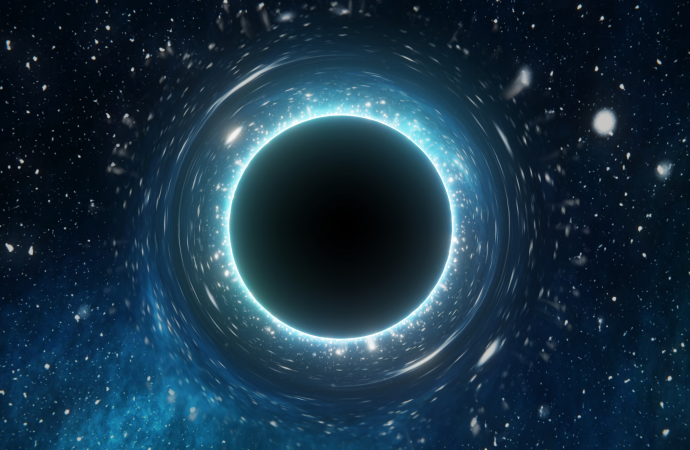Researchers have found that black holes may exert pressure on their surroundings. The discovery made by a team of astronomers in the U.K. builds on a theory posited by Stephen Hawking in 1974, which suggests black holes give off thermal radiation.
Source: Newsweek
It means that black holes, which are formed when stars three times the size of our Sun run out of fuel and undergo a complete collapse, could be more complex than scientists had previously grasped.
The results could also mean black holes are the ideal laboratory for finding a solution that has troubled some of physics’ greatest minds.READ MORE
Professor Xavier Calmet of the Department of Physics and Astronomy at the University of Sussex, U.K., and Folkert Kuipers, a doctoral researcher in the University’s School of Mathematical and Physical Science, stumbled upon the finding on Christmas Day 2020, while examining equations that determine the entropy—a measurement of a system’s available energy—for black holes.
They then explored what they had chanced upon realizing an extra term in an equation represented pressure from a black hole.
“When black holes were discovered in Einstein’s general relativity, they were thought to be very simple objects. Surprisingly, in our equation for the entropy of black holes, we have identified a term that can be interpreted as a pressure,” Calmet tells Newsweek. “If this interpretation is correct, and I don’t see any way out at the moment, this means that black holes are much more complicated and interesting than naively imagined.”
The work connects to the earlier research of Hawking, who died in March 2018, because the physicist was the first to suggest that black holes weren’t simply inert dead stars from which nothing escaped. Just as Hawking suggested black holes have a temperature, Calmet and Kuipers say they have an associated pressure too.
“Hawking showed that when quantum mechanics is added to general relativity, black holes are not black at all, but emit radiation, now called Hawking radiation,” Calmet said.
Calmet and Kuipers’ research, published in the journal Physical Review D, could have implications beyond the study of black holes. It could help solve one of physics’ lingering problems.
Currently, the best description scientists have of the universe at very small scales, such as particles like electrons, is quantum physics, while the most accurate description of the large scale and gravity is Albert Einstein’s theory of general relativity.
The problem is when researchers try to unite those two very separate fields they won’t connect. That has spurred the search for a so-called “theory of everything” including a quantum theory of gravity to unite the two.
Hawking died before he could arrive at such a theory: one that encompasses the physics of the very large and that of the incomprehensively tiny through quantum gravity. Calmet believes that black holes may now be revealed as the ideal place to test such a theory.
“Black holes are ideal systems to study the unification of Einstein’s theory of gravity, general relativity, and quantum physics. They can help us to pinpoint the correct theory of quantum gravity,” Calmet said.
“Eventually, these findings could even maybe have new technological applications down the road which is why blue-sky research is so important for society.
“We are basically learning about the basic laws of nature which can have deep philosophical and spiritual implications.”
In a press release from the University of Sussex, Kuipers described the revelation he and Camet arrived at on Christmas Day. “The pin-drop moment when we realized that the mystery result in our equations was telling us that the black hole we were studying had a pressure—after months of grappling with it—was exhilarating.
“Our result is a consequence of the cutting-edge research that we are undertaking into quantum physics at the University of Sussex and it shines a new light on the quantum nature of black holes.”

Source: Newsweek

































Leave a Comment
You must be logged in to post a comment.